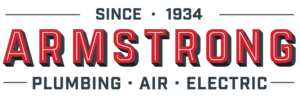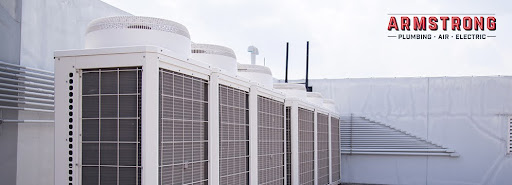Different Types of HVAC Systems for Commercial Buildings
HVAC systems (Heating, Ventilation and Air Conditioning) are necessary for maintaining comfortable temperatures in commercial buildings. There are several types of HVAC systems from which to choose, each suited to different needs.
As a business owner or manager, if you require an HVAC system installation or upgrade for your commercial building, Armstrong Plumbing, Air & Electric has the trained staff to assist in determining what will work best for your specific business needs. Some of the most widely used include:
- Single-Split System: These are the most common type, suitable for smaller commercial spaces. Each unit consists of an air conditioner to cool the refrigerant, a furnace with a fan or coil system to heat and circulate air and ductwork to transport the air around the building.
- Multi-Split System: Like single split systems, multi-splits can connect up to nine indoor units to one outdoor unit. They use inverter technology, allowing for energy-efficient operations. They also have the advantage of independent control of each indoor unit.
- Variable Refrigerant Flow (VRF) or Variable Refrigerant Volume (VRV) Systems: These sophisticated HVAC systems can provide heating and cooling simultaneously to different parts of a building. There are two types: heat pump systems, used in areas with similar heating or cooling needs, and heat recovery systems that can provide both heating and cooling to different areas simultaneously, ideal for large commercial premises.
- Heat Pump Systems: These are energy-efficient and work by moving heat from one area to another. There are various kinds of heat pumps, like air source heat pumps, geothermal heat pumps and water source heat pumps. Their ability to both heat and cool makes them a versatile choice.
- Chilled Beams Systems: These consist of passive and active systems. Passive systems work by radiation and natural convection, while active systems have an integrated air supply. These systems are quiet, energy-efficient, and provide superior indoor air quality.
- HVAC with Dedicated Outdoor Air System (DOAS): This includes a separate system to handle ventilation and humidity control, optimizing comfort and efficiency.
Each system has its benefits and drawbacks, including costs, energy efficiency, and space requirements. Selection depends on various factors, such as the size and type of the building, the local climate, and specific user requirements.
For more information, schedule an appointment with an Armstrong Plumbing, Air & Electric professional.








